Why did we hang a 50-year old telephone on the wall?
Great question! I’m Frank, one of the co-hosts, and I’m going to take you on a little journey.
I’m old enough to have had a phone like this in our kitchen when I was growing up (and yes, that phone number on the dial was my childhood home telephone number). This apartment had a phone jack on the wall, so rather than leave that ugly thing just sitting there, I figured it would be fun to find an old phone on eBay, restore it, and put it in the apartment as a conversation piece.
The phone is technically fully operational, but since the apartment doesn’t have landline telephone service, you can’t actually make or receive calls with it.
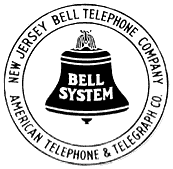
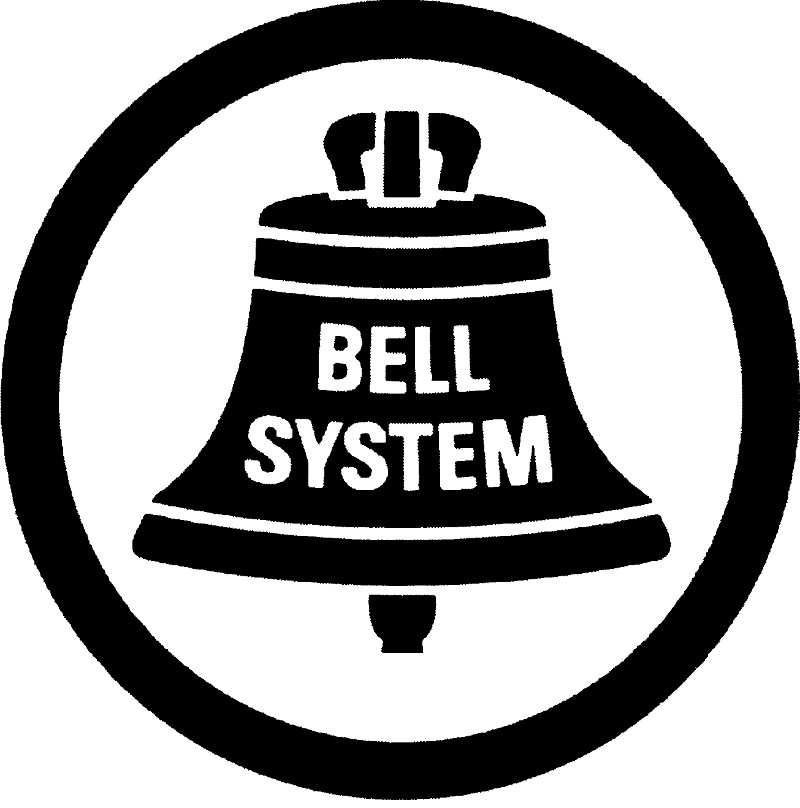


Alphabet Soup
Ever wonder why there are letters below the numbers on a phone keypad? Back in the early days before being able to directly dial local calls, there were exchanges. Exchanges were typically named after the town served, region, or some specific landmark. Phone numbers consisted of the exchange + 5 numbers. But only the first two letters of the exchange mattered. When you lifted the receiver, the operator would come on and ask, “How may I direct your call?” You would respond with the exchange and number. For example, my childhood phone number would have been PIlgrim 4-8575.
Once it became possible to directly dial local calls, the letters were added to the phone dial so the general public could convert the exchange letters into numbers.
Though the letters would otherwise be obsolete now, marketers siezed on the opportunity to come up with phone numbers that spelled words. 1-800-MATTRESS anyone? Just leave off the last “S” for savings.
A Quick Bit of History
Way back in 1877, Alexander Graham Bell and his partners founded the Bell Telephone Company. In 1885, they created a subsidiary called the American Telephone and Telegraph Company (AT&T) to build and operate the first long distance telephone network. Over time, AT&T grew into the largest telephone company in the US and held a monopoly on telehpone service until a court-ordered breakup in 1984.
Prior to the breakup, the Bell System consisted of local operating companies like New Jersey Bell, a phone equipment design and manufacturing company called Western Electric, and Bell Labs, a world-famous research and development company.
It’s important to mention that prior to the 1980s, residential telephone equipment was almost exclusively leased from the phone company. You didn’t own the phones in your house – the phone company owned everything. Look on the handset and you’ll see “BELL SYSTEM PROPERTY – NOT FOR RESALE” above the Western Electric logo.
Since the phone company designed and manufactured all of the equipment, everything was heavy-duty and built to last. As such, there wasn’t always a lot of change in the designs of consumer handsets. Other than the occasional introduction of new colors, the phone you see on the wall is a design that was visually unchanged for over 20 years!
New Jersey’s Role in All This
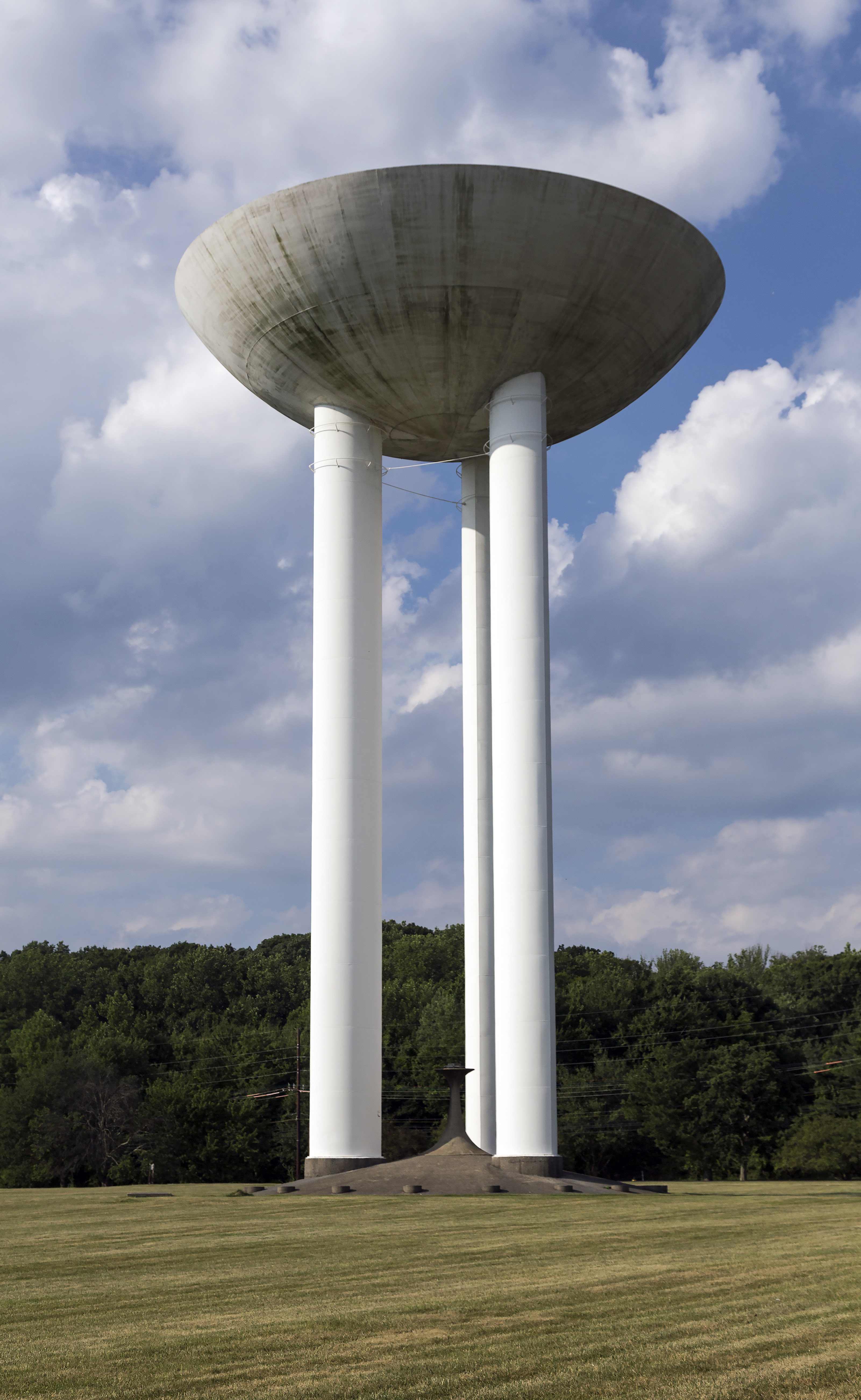
Much of the AT&T / Bell System corporate infrastructure was split between New Jersey and New York City. But Bell Labs, the crown jewel of research and innovation, had some of its biggest breakthroughs in the facilities located in Murray Hill and Holmdel, NJ.
Here are some major inventions and discoveries that were made in these locations:
- Transistor (1947): Invented by John Bardeen, Walter Brattain, and William Shockley, the transistor revolutionized electronics and is a fundamental building block of modern electronic devices. The invention of the transistor took place at the Bell Labs facility in Murray Hill, New Jersey.
- Information Theory (1948): Claude Shannon developed the mathematical theory of communication or information theory, laying the groundwork for the digital revolution.
- Solar Cell (1954): The first practical photovoltaic cell was developed at Bell Labs. This silicon solar cell started the development of solar energy as a source of electricity.
- Laser (1958): Arthur Schawlow and Charles Townes proposed the idea of the laser (Light Amplification by Stimulated Emission of Radiation) at Bell Labs.
- UNIX Operating System (Late 1960s – Early 1970s): Ken Thompson, Dennis Ritchie, and others developed the UNIX operating system at Bell Labs. Ritchie also co-created the C programming language around the same time, which became foundational in computer science and software development.
- Digital Signal Processing: Research at Bell Labs led to the development of digital signal processing techniques, crucial for telecommunications and audio processing.
- Charge-coupled Device (CCD) (1969): Invented by Willard Boyle and George E. Smith, CCDs are used as image sensors in cameras and other imaging devices.
- Fiber Optic Communications: Bell Labs researchers played a significant role in advancing the technology behind fiber optic cables, which revolutionized global communications.
- Cellular Technology: Bell Labs was instrumental in developing the technology and concepts that led to cellular phones and mobile communication.
- Holmdel Horn Antenna (1960s): Located in Holmdel, New Jersey, this large horn reflector antenna was used by radio astronomers Arno Penzias and Robert Wilson to discover cosmic microwave background radiation, providing strong evidence for the Big Bang theory.
Breaking Up is Hard to Do
As far back as the 1940s, the US Department of Justice began investigating AT&T for monopolistic practices. Various actions and settlements delayed a major reckoning for decades. However, in 1974, the DOJ filed a lawsuit against AT&T, alleging violations of the Sherman Antitrust Act. The primary contention was that AT&T’s control of the telecommunications market was anticompetitive.
At that time, the leadership of AT&T realized they couldn’t win, and began years of litigation and negotiation. A settlement agreement was reached in 1982, and went into effect on January 1, 1984.
Under the terms of the settlement:
- AT&T would divest itself of its local operating companies, which provided local telephone service.
- The local operating companies were reorganized into seven independent “Regional Bell Operating Companies” (RBOCs), often called “Baby Bells.” These were: Ameritech, Bell Atlantic, BellSouth, NYNEX, Pacific Telesis, Southwestern Bell, and US West.
- AT&T retained its long-distance services, its manufacturing arm (Western Electric), and Bell Labs (its research and development division).
- AT&T was allowed to enter computer manufacturing, a field it was previously restricted from due to an earlier antitrust case.



You Can Ring Ma Bell (and Other Trivia)
- During the 1900s up until the divestiture in 1984, AT&T was colloquially referred to as “Ma Bell.” The regional phone companies were referred to as “Baby Bells.”
- When you look at a vintage telephone, it’s easy to see why we say “dial the phone.” Until the common adoption of touch-tone phones, everyone literally dialed the phone.
- Similarly, we say the phone is “ringing” because phones had actual bells to signal an incoming call. The model 554 phone we have on the wall has two bells inside the case.
- Dialing numbers that contained 8, 9, or 0 was annoying, because it took extra time. Go ahead and dial 746-0911. That was the phone number to my family’s restaurant, so I called it often. While it seems like dialing “09” takes forever, it feels really satyisfing to end with that quick “11.”
- Particularly with wall-mounted phones, it was hard to get much of anything else done when you were on a call, as you couldn’t move too far away from the base. Over time, retailers like Radio Shack began selling much longer handset “coily” cords – with some stretching up to 25 feet.
- When dialing local calls, you only had to dial the 7 digit phone number. Later, dialing the area code plus the number became necessary.
- Basic phone service included local calls, but long distance and regional calls were billed separately. It wasn’t uncommon to receive a 9 page phone bill filled with an itemized list of phone calls.
- The Model 554 telephone was made of ABS, a thermoplastic material that was more durable than Bakelite, which was used in earlier model phones. ABS was a much more durable and versatile material, especially given the range of colors the phones were produced in.
- The phone weighs a hefty 4.75 pounds – more than 8x heavier than a typical flagship cellphone. The handset can also pass significantly greater drop tests without any damage.
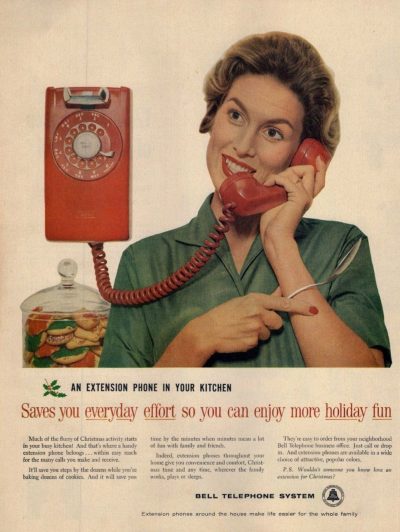
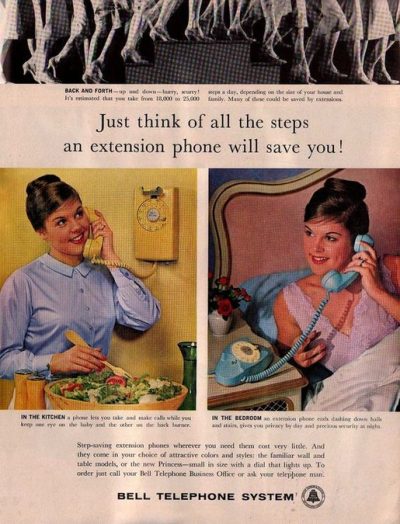
These Bell System magazine ads from 1959 touted the convenience of having a wall-mounted phone in the kitchen, and the newly-released “Princess” phone on the nightstand.
What Happened Next?
Bell Atlantic, of which the former NJ Bell Telephone Company was a major part, later merged with NYNEX (New York – New England Exchange). The now larger Bell Atlantic then merged with GTE (General Telephone & Electronics Company). Like AT&T, GTE’s roots went back to the late 1800s, and also like AT&T, GTE had expanded to become one of the largest telecom companies – with its own R&D labs, a worldwide customer base, a foothold in emerging cellular / wireless markets, and even becoming one of the early providers of internet access.
Have you guessed the name of this new mega corporation?
Here’s a hint – the name is a combination of the Latin word for truth (“veritas”) and “horizon.”


Weighs 4.75 pounds
Image Credits
The logo may be obtained from New Jersey Bell., Fair use, https://en.wikipedia.org/w/index.php?curid=20701806
Drawn by The Navigators. – This vector image includes elements that have been taken or adapted from this file:, Public Domain, https://commons.wikimedia.org/w/index.php?curid=76059566
By Michael Bierut (Pentagram) – As described on Brand Central, Public Domain, https://commons.wikimedia.org/w/index.php?curid=42919665
Bell Labs Transistor Water Tower, Acroterion, CC BY-SA 4.0, via Wikimedia Commons
